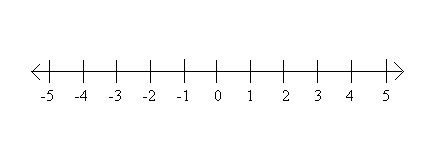Mandelbrot Set
The Mandelbrot set, named after Benoit Mandelbrot, is a fractal. A fractal is a curve or geometrical figure, each part of which has the same statistical character as the whole. They are useful in modelling (such as snowflakes) in which similar patterns recur at smaller and smaller scales. They are also useful at explaining partly random or chaotic phenomena. These shapes appear to be completely random, but – as with fractals – there is an underlying pattern that determines how the shapes are formed and what they will look like. Mathematics can help us understand the shapes better, and thus has applications in medicine, biology, geology and meteorology.
The Mandelbrot set can be explained with the equation zn+1 = zn2 + c. In this equation z and c are complex numbers and n is a positive integer starting from 0. So what is a complex number? A complex number is a number that can be expressed in the form a+bi with a and b being real numbers and i being an imaginary number that can satisfy the equation i2=−1.
The Mandelbrot set is a group of complex number so we need to graph it on the complex number plane. But what is a complex number plane and what is the difference between it and a real number plane.
Real numbers can be represented on a one dimensional line called a real number line. Negative number are plotted to the left of 0 and positive numbers are plotted to the right of 0. A real number line is shown below.
A complex number has two parts, a real number and an imaginary number, so we need a two dimensional graph to graph them. So to create this we add a vertical dimension which represents the imaginary number. A complex number plane is shown below.
First we need to find out how many numbers are part of the set so to do this we need to test the equation. c is a constant number that never changes. We change n which is the intonation of z by starting at 0 and adding one 1 each time. For example if n=0 z would equal 1 so the answer for the particular test would be 1 plus whichever constant number c is.
We are not really interested in the actual result of zn+1 but its magnitude. The magnitude of a number is its distance from zero so the magnitude of -9 is 9. The magnitude of a complex number is harder to measure. So to calculate it we need to add the square of the numbers distance from the x-axis (in the graph below this is represented by b) to the square of the numbers distance from the y axis (this is represented by the a in the graph below) and then square root it. The equation is shown below with d being the magnitude.
As we test our equations zn+1 changes and the magnitude of zn+1 also changes. The magnitude does one of two things, It either stays below 2 or will eventually go above 2. Once the magnitude surpasses 2 it continues increasing. Any equation that surpasses 2 is not part of the Mandelbrot but those number which do stay below 2 are part of the Mandelbrot. As shown below.
If we plot thousands of points from an equation from the Mandelbrot set an image will appear. An example is seen below.
To see the Mandelbrot fractal where you can zoom in, visit this site-
http://world.mathigon.org/Fractals
Scroll down to the Mandelbrot zoomer.




No comments:
Post a Comment